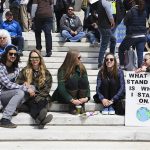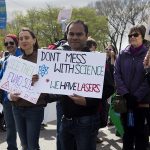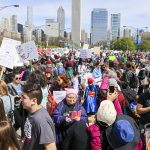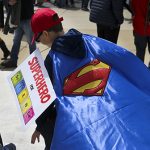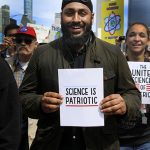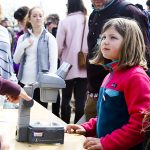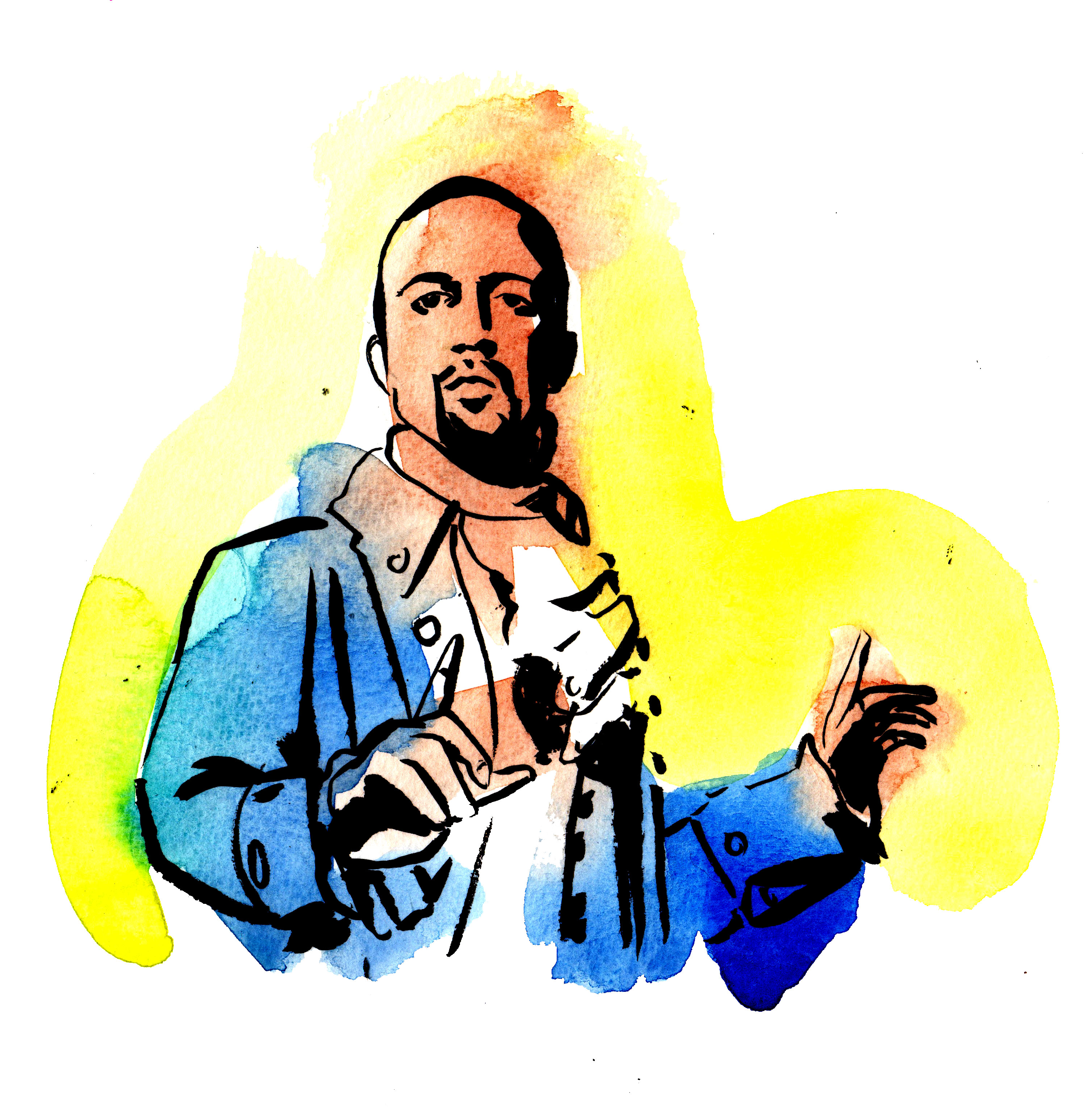
Slowly, people funneled through Congress Parkway onto Columbus Drive, and gathered around a stage that seemed small compared to the crowd. At around 10 a.m., the crowd of what some sources have said to have been 40,000 to 60,000 people cheered as Adam Arcus, one of the directors and organizers of the March for Science in Chicago, took the stage.
Celebrated on April 22, 2017, the 47th anniversary of Earth Day, Arcus explained that the March for Science was possibly the largest event in scientific history. The event was centered around the march in Washington ,D.C., and was replicated in more the 600 other cities. Among these, the ones that gathered the most people included Washington (40,000 attendees); New York (20,000); Philadelphia (10,000); London (10,000); and, of course, Chicago.
The marches in several cities consisted of three parts: a rally, a march, and an exposition. Here, the rally started with Arcus welcoming everyone. He set out a small set of rules — don’t litter, don’t step on the grass, if in doubt ask the marshals.
“It is your passion for science, your demands for evidence-based policies, and for a better and for a more ethical science for which we are here today,” he said. Then Kristian Aloma, director and organizer of the march, along with his own thanks, introduced the speakers one by one.
Fredy Lopez read the essay he submitted for his eighth grade science essay contest about the importance of science.
The director of Diversity and Inclusion from Rush University, Dr. Lee Bitsoi, spoke about the importance of inclusion of minority groups in science and the importance of fighting against a still very-present bigotry in the field.
Senior Fellow at the Chicago Council of Global Affairs (and Chicago’s inaugural sustainability officer) Karen R. Weight spoke about the different things she had done to improve the city’s sustainability as evidence that evidence-based policy can happen.
Dr. Gary Cooper spoke about the different things he has done, and expects everyone else to do as a scientist, as a business owner, and as part of the Chicago community to help counter the different stereotypes of science and scientists in hopes that research can blossom and that more people from all walks of life can understand they too can be scientists.
Finally, Emily Graslie, chief curiosity correspondent in the Field Museum and host of popular STEM YouTube Channel The Brain Scoop, gave a graduation speech to commemorate a new era for the scientific community. She explained the importance of the sense of community itself.
The march started in Jackson Drive (where the stage was located) and went all the way to the Field Museum. Signs displaying an innumerable amount of puns and scientific facts were shared among the attendees. People sang and chanted and talked about science. There was no littering or damaging of the park. There was protesting against Donald Trump and EPA Chief Scott Pruitt and, mostly, a celebration of community and ideals.
The expo was also situated in front of the Field Museum, one of the biggest supporters of the March in Chicago. There were dozens of booths from different organizations each inviting people to learn about how they are helping or, at least, dealing with science. Some specialized in specific types of research, while others, like the School of the Art Institute of Chicago (SAIC), were just there to talk about science.
In the end, the core principles of the March in Chicago (and in the rest of the world) were best summarized by Graslie in her speech:
“The March for Science is an opportunity to reflect on those have come before us, on the development we humans have achieved, not only in the last few years but hundreds and thousands. This is not nearly a party to celebrate and pat ourselves on the back for characteristics as truth seekers and fact checkers. This March is also a chance to acknowledge our pitfalls, our historic and persistent challenges and our shortcomings as scientists and as supporters of scientific endeavors and progress.”



